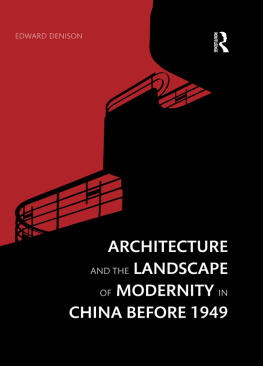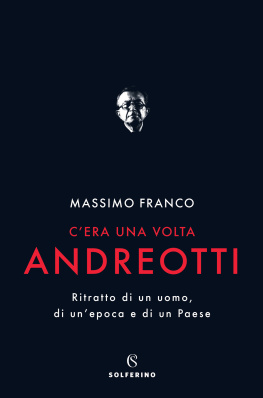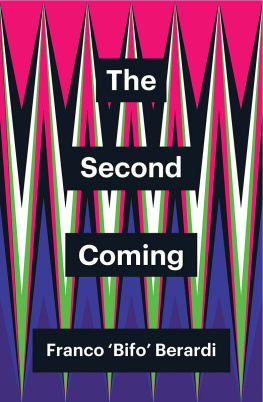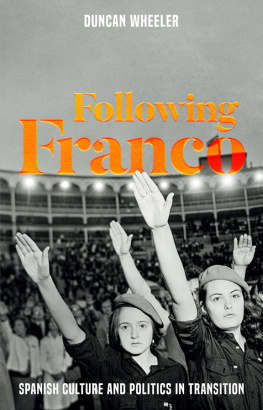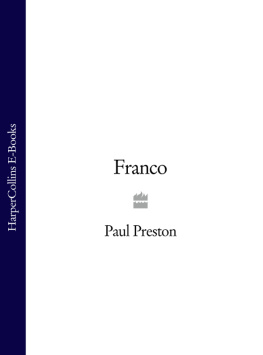Kay Bea Jones - Suspending Modernity: The Architecture of Franco Albini
Here you can read online Kay Bea Jones - Suspending Modernity: The Architecture of Franco Albini full text of the book (entire story) in english for free. Download pdf and epub, get meaning, cover and reviews about this ebook. City: Denkmal für die ermordeten Juden Europas., Farnham, year: 2013, publisher: Ashgate Publishing, genre: Home and family. Description of the work, (preface) as well as reviews are available. Best literature library LitArk.com created for fans of good reading and offers a wide selection of genres:
Romance novel
Science fiction
Adventure
Detective
Science
History
Home and family
Prose
Art
Politics
Computer
Non-fiction
Religion
Business
Children
Humor
Choose a favorite category and find really read worthwhile books. Enjoy immersion in the world of imagination, feel the emotions of the characters or learn something new for yourself, make an fascinating discovery.

- Book:Suspending Modernity: The Architecture of Franco Albini
- Author:
- Publisher:Ashgate Publishing
- Genre:
- Year:2013
- City:Denkmal für die ermordeten Juden Europas., Farnham
- Rating:3 / 5
- Favourites:Add to favourites
- Your mark:
- 60
- 1
- 2
- 3
- 4
- 5
Suspending Modernity: The Architecture of Franco Albini: summary, description and annotation
We offer to read an annotation, description, summary or preface (depends on what the author of the book "Suspending Modernity: The Architecture of Franco Albini" wrote himself). If you haven't found the necessary information about the book — write in the comments, we will try to find it.
Suspending Modernity: The Architecture of Franco Albini — read online for free the complete book (whole text) full work
Below is the text of the book, divided by pages. System saving the place of the last page read, allows you to conveniently read the book "Suspending Modernity: The Architecture of Franco Albini" online for free, without having to search again every time where you left off. Put a bookmark, and you can go to the page where you finished reading at any time.
Font size:
Interval:
Bookmark:
SUSPENDING MODERNITY: THE ARCHITECTURE OF FRANCO ALBINI
Ashgate Studies in Architecture Series
SERIES EDITOR: EAMONN CANNIFFE, MANCHESTER SCHOOL OF ARCHITECTURE,
MANCHESTER METROPOLITAN UNIVERSITY, UK
The discipline of Architecture is undergoing subtle transformation as design awareness permeates our visually dominated culture. Technological change, the search for sustainability and debates around the value of place and meaning of the architectural gesture are aspects which will affect the cities we inhabit. This series seeks to address such topics, both theoretically and in practice, through the publication of high quality original research, written and visual.
Other titles in this series
Shoah Presence: Architectural Representations of the Holocaust
Eran Neuman
ISBN 978 1 4094 2923 4
Reconstructing Italy
The Ina-Casa Neighborhoods of the Postwar Era
Stephanie Zeier Pilat
ISBN 978 1 4094 6580 5
The Architecture of Edwin Maxwell Fry and Jane Drew
Twentieth Century Architecture, Pioneer Modernism and the Tropics
Iain Jackson and Jessica Holland
ISBN 978 1 4094 5198 3
Recto Verso: Redefining the Sketchbook
Edited by Angela Bartram, Nader El-Bizri and Douglas Gittens
ISBN 978 1 4094 6866 0
The Architecture of Luxury
Annette Condello
ISBN 978 1 4094 3321 7
Building the Modern Church
Roman Catholic Church Architecture in Britain, 1955 to 1975
Robert Proctor
ISBN 978 1 4094 4915 7
The Architectural Capriccio
Memory, Fantasy and Invention
Edited by Lucien Steil
ISBN 978 1 4094 3191 6
The Architecture of Franco Albini
Kay Bea Jones
School of Architecture, Ohio State University, USA
ASHGATE
Kay Bea Jones 2014
All rights reserved. No part of this publication may be reproduced, stored in a retrieval system or transmitted in any form or by any means, electronic, mechanical, photocopying, recording or otherwise without the prior permission of the publisher.
Kay Bea Jones has asserted her right under the Copyright, Designs and Patents Act, 1988, to be identified as the author of this work.
Published by
Ashgate Publishing Limited
Wey Court East
Union Road
Farnham
Surrey, GU9 7PT
England
Ashgate Publishing Company
110 Cherry Street
Suite 3-1
Burlington, VT 05401-3818
USA
www.ashgate.com
British Library Cataloguing in Publication Data
A catalogue record for this book is available from the British Library.
Library of Congress Cataloging-in-Publication Data
Jones, Kay Bea.
Suspending modernity : the architecture of Franco Albini / by Kay Bea Jones.
pages cm. -- (Ashgate studies in architecture)
Includes bibliographical references and index.
ISBN 978-1-4724-2728-1 (hardback) -- ISBN 978-1-4724-2729-8 (ebook) -- ISBN 978-1-4724-2730-4 (epub) 1. Albini, Franco--Criticism and interpretation. 2. Architecture--Italy--History--20th century. I. Title.
NA1123.A525J66 2014
720.92--dc23
2014020390
ISBN 9781472427281 (hbk)
ISBN 9781472427298 (ebk-PDF)
ISBN 9781472427304 (ebk-ePUB)
Dedicated to my parents,
Mary A. Macklin Jones and Kenneth Buxton Jones Jr.
It was a damp, dark day the first time that I wandered into Franco Albinis Treasury of San Lorenzo Museum in Genoa. I had been fortunate enough to receive a USIA (United States Information Agency) research grant to study Modern architecture in Genoa during the winter of 1989. The citys miniature streetsin some of which you can reach walls on both sides with outstretched armsdrew me along labyrinthine corridors where I found painted faades, traced the common striping of local black and white stone, discovered medieval loggias, some long since filled in but leaving embedded columns, and I enjoyed neon-laced storefronts advertising antiquities or books or old cafes. Narrow, often empty sloping streets eventually led to the daylight of a piazza or the Sottoripa with its busy traffic and business activities of the harbor. The stair-stepped ramp paths leading uphill rewarded tired legs with grand views of the industrial port over silver rooftops. I felt an equal mix of delight and anxiety as I got lost threading my way through the networks of this hard-worn port town, its old solid structures and hard working citizens inhabiting a kind of density I had not known, although I had lived in Rome and Florence. Meanwhile, grandiose frescoed interiors of elegant baroque palazzi holding private family collections existed just beyond the surface.
Up from the port and through the Piazza Scuole Pie, I wandered into the duomo church of San Lorenzo. The monumental faade invited passage through its left side doora portal that looked like the section of nested Russian dolls. I passed the stone lion, climbed the black and white stone steps, and admired the intricate inlaid marble ornament that Marco Polo and Andrea Doria no doubt had touched that brought the scale down to human dimensions with magnificent detail and color. The austere striped and arcaded colonnade formed side aisles that led me into the sacristy, from which a ticket bought entry underground to the precious collection of artifacts known as the cathedrals treasury, a most unusual assortment of sacred bounty. Among the spoils of seizure was the reliquary of St. Lawrence brought back by a Genoese crusader from the Levant. It included such treasures as St. Annes armbone exposedwithin a gilded sleeve, the chalcedony chalice framed in gold, said to have held the head of John the Baptist when it was served to Herod, a the green glass bowl called the Holy Graal. Could it be?
Except for the bejeweled and shiny treasures, the crypt was empty. I was alone; the silence and reflections were dizzying. Intense beams of light focused on gem-studded cardinals robes in custom glass cases, silver statuary and ritual vessels glistened in the dark chambersspaces that remained invisible until my eyes adjusted to the dim light. Gradually, I became aware of the architecture that allowed for such intimate relations with such unique artifacts. Four small gallery cylinders and an interstitial hexagon that joined three of the four round rooms formed a Modern assemblage of interlaced spaces, quite in contrast to the collections they housed, and in spite of being buried beneath a medieval church. The rooms were refined and simple, rendered from abstract geometries and realized in matte finished carved stone producing uniform floor and wall surfaces. Masterful was the design of almost invisible infrastructure that provided lighting and air movement with cast-in-place radial concrete structural ribs that included beads of skylight overhead. Such humble, yet brilliant, and effective architecture for displaying these historic artifacts was new to my Modern eyes.
Over the following weeks, I discovered three other museums and two office buildings, all in the heart of Genoa and all designed by Franco Albini. I had been attracted to each Modern intervention for the subtle way the present was married with the past, and the fabrication craft was superb, albeit with expression of the intervention minimized. As I learned that each work of architecture was drawn by the same hand, I became acutely aware of the profound nature of design that transcends style. Except for tectonic precision and subtle performance, there was little to link the look of these different Modern interventions to one another. Most apparent, each was intimately in sync with its physical surrounds, drawing selectively from existing conditions and able to revalue and challenge indifference to history. In his solutions to small problems, Albini had, for me, elevated the practice of architecture to a new art. In these few projects, his greatness lay less in the novelty or boldness of his intervention than in its subtly.
Next pageFont size:
Interval:
Bookmark:
Similar books «Suspending Modernity: The Architecture of Franco Albini»
Look at similar books to Suspending Modernity: The Architecture of Franco Albini. We have selected literature similar in name and meaning in the hope of providing readers with more options to find new, interesting, not yet read works.
Discussion, reviews of the book Suspending Modernity: The Architecture of Franco Albini and just readers' own opinions. Leave your comments, write what you think about the work, its meaning or the main characters. Specify what exactly you liked and what you didn't like, and why you think so.


